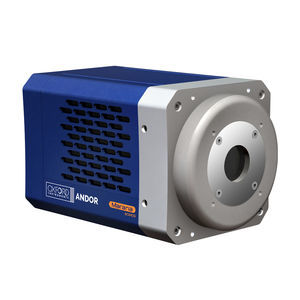
- Products
- Spectroscopy camera module
- Oxford Instruments
Spectroscopy camera module Newton 971digitalEMCCDcooled
Add to favorites
Compare this product
Characteristics
- Applications
- for spectroscopy
- Technology
- digital
- Sensor type
- EMCCD
- Other characteristics
- cooled, USB
Description
The most sensitive EMCCD spectroscopic detector ever offers you active pixels of 1600 x 400 along with 16 x 16 µm pixel size along with the -100°C TE cooling. It’s variable readout rates enable data readout at up to 3 Megahertz, through the plug and play USB interface.
EM sensor
Multi-Megahertz Readout
TE cooling to -100°C
UltraVac™
16 x 16 μm pixel size
Overview
EM technology enables charge from each pixel to be multiplied on the sensor before readout, providing single photon sensitivity. The Newton EM platform combines a 1600 x 200 (or 1600 x 400) array of 16 µm pixels, thermoelectric cooling down to -100°C for negligible dark current, 3MHz readout and USB 2.0 plug-and-play connectivity to provide unrivalled performance for spectroscopic applications. The dual output amplifiers allow software selection between either a conventional High Sensitivity or Electron Multiplying outputs to suit a broad range of photon regime conditions. This makes the Newton EMCCD the ideal choice for ultrafast chemical mapping applications e.g. SERS, TERS or luminescence mapping.
Features
EM sensor technology - <1e- read noise
Fringe suppression technology as standard (970-BVF only) - Fringing minimized for NIR applications
Multi-Megahertz Readout - High repetition rates achievable with low noise electronics
TE cooling to -100°C - Negligible dark current without the inconvenience of LN2
UltraVac™ - Permanent vacuum integrity, critical for deep cooling
16 x 16 µm pixel size - Optimized pixel size for achievement of high resolution
Dual output amplifiers - Software select between either a conventional High Sensitivity output (for low light applications)
Catalogs
Spectroscopy Solutions
25 Pages
*Prices are pre-tax. They exclude delivery charges and customs duties and do not include additional charges for installation or activation options. Prices are indicative only and may vary by country, with changes to the cost of raw materials and exchange rates.








